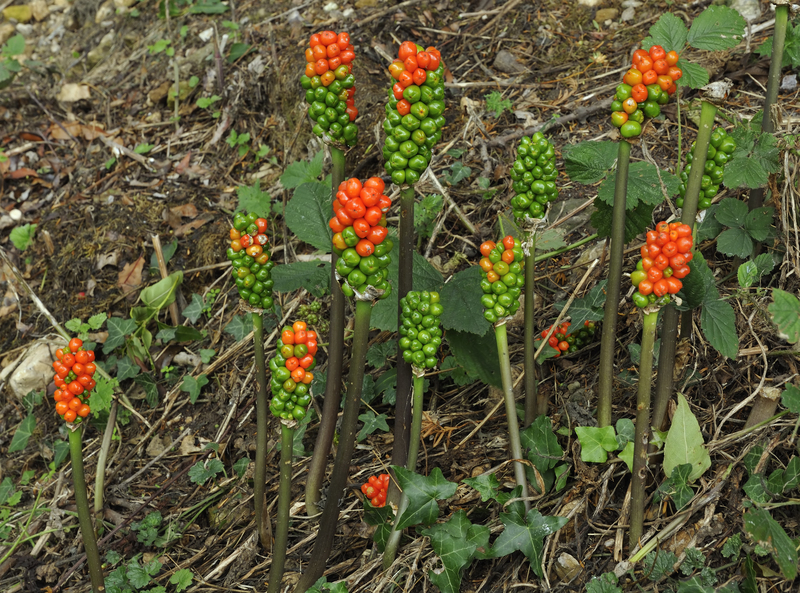Essential Ways to Safeguard Your Grass from Summer Drought Stress
Summer brings long days of sunshine, higher temperatures, and, unfortunately, drought stress on grass lawns. As water becomes scarce and evaporation rates soar, your lush green lawn can quickly turn brown and brittle if not cared for properly. The good news? There are effective, science-backed strategies to protect your grass from summer drought stress while still achieving that enviable lawn. In this comprehensive article, we'll explore essential ways to safeguard your grass from drought, ensure optimal lawn health, and keep your turf vibrant all season long.
Understanding Drought Stress in Lawns
Drought stress occurs when your grass receives less water than it needs for healthy growth. This moisture deficit leads to symptoms such as faded color, wilting, and even death in extreme cases. The most susceptible lawns are newly established grasses, shallow-rooted varieties, and those that have not been managed with proper drought-resistant practices.
- Signs of drought stress: Leaf curling or folding, bluish-gray appearance, visible footprints remaining in the lawn, and slowed growth.
- Common triggers: Extended periods without rain, heatwaves, improper watering, and poor soil conditions.
Why is it important to address lawn drought stress? Allowing your lawn to experience extended drought damage not only impacts curb appeal but also weakens the turf, making it more susceptible to weeds, pests, and diseases.

Top Strategies to Protect Your Lawn from Summer Drought
Let's dive into time-tested, expert-backed approaches for protecting your grass during drought and ensuring a resilient, lush lawn despite the harshest summer conditions.
1. Choose the Right Grass Species
One of the most effective ways to prevent drought stress on your lawn is to plant grass types naturally adapted to drought conditions. These species require less water and are inherently more robust during hot, dry spells.
- Warm-season grasses: Bermuda grass, Zoysia grass, Buffalo grass, and Bahia grass thrive in heat and recover quickly from drought stress.
- Cool-season grasses with drought tolerance: Tall fescue and fine fescue varieties such as creeping red fescue and chewings fescue offer higher resilience in cooler climates.
For those considering new lawns or overseeding, pick varieties labeled as "drought-resistant lawn grasses" to give your turf the best start.
2. Optimize Your Watering Practices
Correct and efficient watering is the most critical factor in safeguarding grass from summer drought stress. Overwatering wastes resources, while underwatering leads to stressed, shallow-rooted plants. So, how should you water your lawn for maximum drought resilience?
- Deep, Infrequent Watering: Watering deeply and less often encourages roots to grow downward where soil moisture persists. Aim to soak the top 6-8 inches of soil.
- Early Morning Watering: Apply water between 4:00 a.m. and 9:00 a.m. to maximize absorption and minimize evaporation losses.
- Monitor Soil Moisture: Use a soil moisture meter or simply probe with a screwdriver to check if soil is moist below the surface.
- Adjust for Rain: Skip irrigation cycles after rainfall to avoid overwatering and fungal issues.
A typical guideline is 1 inch of water per week (including rainfall), but always adjust based on local climate and soil conditions.
3. Mow High and Smart
Mowing heights play a crucial role in protecting lawns from drought. Longer grass blades shade the soil, reducing evaporation and promoting deeper root growth.
- Set mower blades to 3-4 inches high. Never remove more than 1/3 of the grass blade at a time.
- Keep mower blades sharp: Dull blades tear the grass, making it more vulnerable to disease and water loss.
- Leave grass clippings on the lawn (grasscycling) to return nutrients and retain soil moisture.
Regularly adjusting your mowing routine is a simple yet impactful way to minimize drought stress on your lawn.
4. Mulch and Topdress with Organic Matter
Applying a layer of organic mulch or compost is an excellent strategy for moisture retention and improved drought tolerance in lawns.
- Mulch mowing: Using a mulching mower returns finely chopped clippings which act as a natural, moisture-retaining blanket.
- Topdressing with compost: Spreading a thin layer of finished compost (no more than 1/4 inch) improves soil structure, increases water holding capacity, and supports beneficial microorganisms.
This organic approach builds healthier soils, supports robust root systems, and slows evaporation during the hottest part of summer.
5. Fertilize Wisely
Nutrients power healthy growth and recovery, but over-fertilization during drought periods can do more harm than good.
- Apply slow-release fertilizers: These products feed grass steadily without overwhelming stressed plants.
- Never fertilize during severe drought when the lawn is brown and dormant; wait until active growth resumes.
- Choose low-nitrogen blends for summer applications. High nitrogen can stimulate growth that the roots cannot support during water shortages.
Properly timed and measured fertilization supports grass health without increasing susceptibility to drought damage.
6. Aerate Compacted Soils
Compacted soil prevents water from reaching grass roots and limits root expansion, compounding drought stress on your lawn.
- Core aeration: This process removes plugs of soil, allowing air, water, and nutrients to penetrate deeply.
- Frequency: Aerate at least once a year--ideally in late spring or early fall when grass is actively growing.
Aerated lawns develop deeper roots and have increased resilience during periods of limited rainfall.
7. Manage Lawn Traffic
Foot traffic and heavy equipment crush grass blades and compact soil, both of which amplify drought stress.
- Limit activity on stressed lawns--divert pets, children, and equipment away until the drought breaks.
- Create defined walkways with stepping stones or mulch to prevent repeat wear in the same areas.
8. Control Weeds and Pests
Weeds compete for already scarce water and nutrients while pests exploit weakened, drought-stressed lawns.
- Spot-treat weeds: Remove manually or use targeted, drought-safe herbicides to reduce competition for resources.
- Scout regularly: Monitor for signs of chinch bugs, grubs, and other lawn pests, and address infestations early to prevent lasting damage.
Vigilant weed and pest management are essential to safeguarding grass from summer drought damage.
9. Prepare the Soil for Long-Term Drought Resistance
Healthy, well-structured soil forms the foundation of a drought-resistant lawn. Regular amendment with organic matter, correction of nutrient imbalances, and improvement of drainage all contribute to lasting resilience.
- Amend clay soils with compost and sand to improve drainage and reduce runoff.
- Add organic material annually to boost the water retention of sandy soils.
- Test your soil every few years and correct pH or nutrient deficiencies as recommended.
A thriving, biologically active soil supports robust, deep-rooted grass that can better withstand summer droughts.
10. Consider Lawn Alternatives and Smart Landscaping
If water restrictions are frequent in your area, consider reducing your lawn's size and incorporating drought-resistant ground covers, native plants, or xeriscaping elements. These alternatives reduce overall water usage while maintaining attractive, functional outdoor spaces.
- Replace some lawn areas with mulch, gravel, or patios to minimize the need for irrigation.
- Choose drought-tolerant landscaping plants adapted to your region's climate.
A smarter landscape design not only conserves water but also relieves maintenance stress during extended dry periods.
Bonus Tips: What NOT to Do During Drought Stress
- Don't dethatch or apply herbicides when your lawn is severely drought-stricken.
- Don't mow too short: Scalping removes protection and adds stress to already suffering grass.
- Don't overwater: Shallow, frequent watering weakens roots and encourages disease.
How to Revive a Drought Stressed Lawn
If your grass has turned brown and dormant from drought, don't panic! Most healthy lawns can recover quickly when consistent rainfall or irrigation returns. Follow these steps:
- Resume deep, regular watering once the drought subsides.
- Aerate soil and topdress with organic matter in early fall.
- Overseed thin patches if necessary--choose drought-resistant varieties.
- Feed with a balanced, slow-release fertilizer to stimulate recovery (only when active growth restarts).
- Keep foot traffic to a minimum while the lawn rebounds.

Frequently Asked Questions about Drought Protection for Lawns
How long can grass survive without water?
Cool-season grass may turn brown and go dormant after 2-3 weeks of drought but can often survive up to 4-6 weeks without major damage. Most warm-season grasses can endure even longer. Quick recovery is likely if the drought ends soon and the roots remain healthy.
Is it better to water a little every day?
No--shallow watering encourages surface roots, making grass less drought-resistant. Water deeply and less often to drive roots downward and build long-term resilience.
Can I mow my lawn during a drought?
If mowing is necessary, raise the blade height and never remove more than a third of the grass blade. Avoid mowing when the grass is extremely dry or dormant--this minimizes extra stress.
Conclusion: Build a Resilient, Drought-Proof Lawn
With rising summer temperatures and unpredictable rainfall patterns, protecting your grass from drought stress is more essential than ever. By choosing appropriate grass species, watering wisely, mowing high, enhancing soil health, and adjusting maintenance routines, you can ensure your lawn stays green, healthy, and vibrant--no matter how dry the season.
For the best results, integrate several of the strategies outlined in this article into your lawn care routine. Remember, a little extra care can make a big difference in the long-term survival and beauty of your grass during challenging summer droughts.
Start today and enjoy a green, thriving lawn even in the hottest months ahead! For more tips on drought-resistant lawn care and grass health, stay tuned to our expert guides.